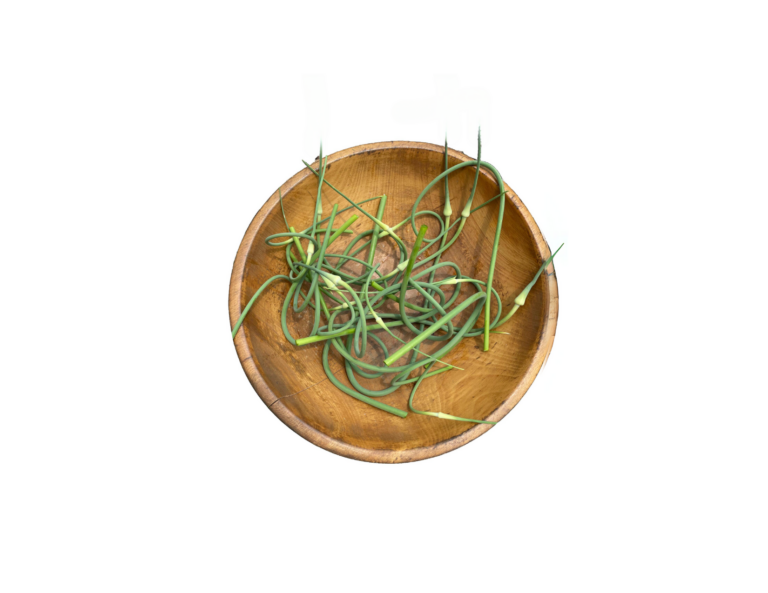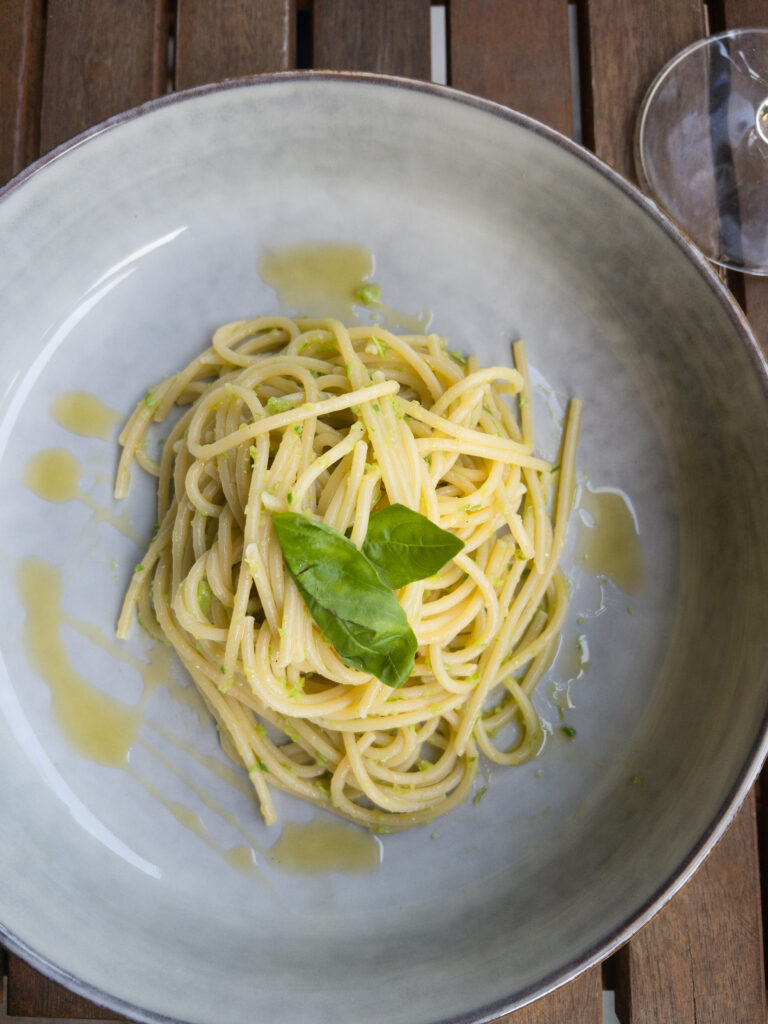✔ bunch of garlic scapes
✔ 1/2 cup extra virgin olive oil
✔ zest and juice of 1 lemon
✔ salt & pepper
✔ parmesan cheese (optional)
Garlic is a slow growing crop and benefits from being planted in the fall so it can begin to develop a root system.
There are two main types of garlic, hardneck and softneck. Hardneck garlic develops a scape that is both edible and delicious. It has a mild garlic flavor and can be made into a pesto, added to salads, and even pickled.
In our travels, we first came across garlic scape pesto at an Italian marketplace on Bainbridge Island, WA called Via Rosa 11. The proprietor, Pino, made it with ricotta, and we ate it as a topping on bread and grilled vegetables.
Having ourselves planted garlic last fall and seeing the garlic develop scapes in mid-May we were excited to make garlic scape pesto ourselves. We decided to skip the ricotta and make a simple pesto using the scapes, olive oil, lemon zest, lemon juice, fresh parmesan, salt and pepper. A simple recipe with a bold flavor.
Our first use of it was as a pesto on spaghetti. While traditionally pesto is made with basil and garlic, the absence of basil did not take anything away from the dish. A little garlic scape pesto goes a long way.

1 To harvest garlic scapes, wait for them to curl and cut them from the plant just above where they meet the leaves. Trim off the woody ends and cut into shorter lengths so that they fit into a food processor or blender. I harvested about 10 scapes for this recipe.

2 Add them to a food processor or blender and zest and juice one lemon. Grate some fresh parmesan and add a pinch of salt and pepper.
3 Blend the ingredients together while drizzling a half cup of good quality extra virgin olive oil into the processor and blend until the ingredients form a pesto consistency. This pesto has an intense flavor so only use a small amount at first and then adjust accordingly. It goes great with pasta, paninis, and grilled vegetables.
Note: The garlic scape pesto can be stored in the refrigerator for about a week. Top with extra olive oil to prevent oxidation. It can also be frozen in cubes for use all summer long.
